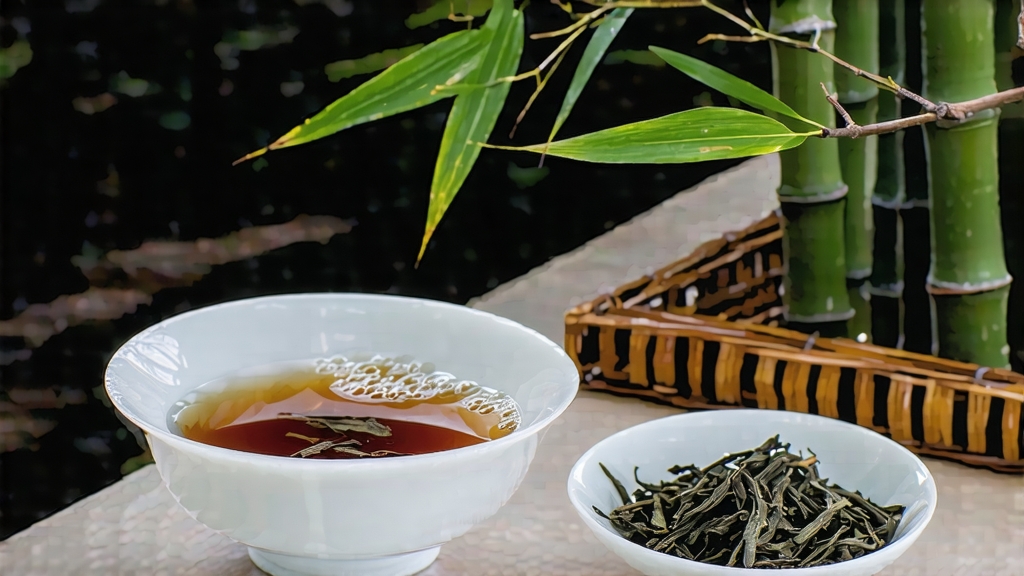
When European tea drinkers first encountered the dark, twisted leaves that produced a bright crimson cup in the early seventeenth century, they were tasting Lapsang Souchong—long before the English gave the category the name “black tea.” Grown in the precipitous Wuyi Mountains of northern Fujian, this pioneering red (hong) cha became the prototype for every later black tea, from Assam to Ceylon. Yet its own story remains rooted in a tiny, mist-locked core zone around Tongmu Village, where the pine forests, mineral soils, and a history of ingenuity combined to create a tea that is simultaneously rugged and refined.
Legend credits the birth of Lapsang Souchong to an accidental interruption during the late Ming dynasty. A passing army, so the tale goes, commandeered a tea workshop mid-processing. To save the withering leaves from spoilage, workers rushed them over burning pine roots the moment the soldiers left. The resulting smoky aroma proved wildly popular with the Dutch traders who received the first shipments in 1604, launching a craze that would reshape global commerce. While romantic, the story contains a kernel of truth: Tongmu’s remoteness forced farmers to improvise with local fuel, and the resinous smoke acted as both preservative and flavoring agent on the long sea voyage around the Cape of Good Hope.
Today the name “Lapsang Souchong” covers two distinct styles. The traditional, fully smoked version (zhengshan xiaozhong) is still produced inside the 60 km² core reserve known as Zheng Shan—literally “Original Mountain.” Only leaves picked within this perimeter may bear the designation, and they must be withered over embers of Masson pine, then pan-fired, rolled, oxidized, and finally re-smoked in bamboo sieves set above slow pinewood fires. The result is a glossy, ebony strip that smells of campfire, dried longan, and hints of frankincense. A second, newer “unsmoked” style (wuxun xiaozhong) omits the final smoking stage, allowing the natural fruit and honey notes of the Wuyi cultivar to dominate. Both share the same two-leaves-and-a-bud pluck standard, but diverge in the last, decisive hours of production.
Crafting either version demands exquisite timing. Picking begins at dawn when mountain dew still glistens; by noon the leaves must reach the three-storey wooden workshops that cling to the hillsides like swallows’ nests. There they are spread only one leaf deep on large bamboo trays suspended over smouldering pine trenches. The withering room is a cathedral of scent: resin pops, sap hisses, and the tea master’s bare hand is the only thermometer trusted to judge when the leaf has lost 60 % of its moisture and turned velvety to the touch. Oxidation follows in cloth-lined wicker baskets kept at 24 °C and 75 % humidity; every fifteen minutes the leaves are gently tossed to bruise the edges just enough to release catechins that will transform into theaflavins and thearubigins. Once the leaf emits a sweet apple-peel fragrance, firing in 200 °C woks arrests oxidation within seconds. For the smoked style, the final drying is prolonged for up to eight hours, during which the leaves absorb volatile phenols—guaiacol and syringol—that later translate into the tea’s signature whisky-like nose.
Water that has flowed through the same granite spine as the tea gardens is considered ideal for brewing. In Tongmu, locals collect spring water in cedar buckets and bring it to a rolling boil, then let it subside for thirty seconds until the bubbles are “the size of crab eyes.” For gongfu service, 5 g of leaf are placed in a 120 ml porcelain gaiwan. The first 5-second rinse is discarded; subsequent infusions begin at 8 seconds and lengthen by 3 seconds each steep. A proper Lapsang Souchong yields at least eight layers of flavor: the opening infusion carries pine smoke wrapped around lychee sweetness; by the third cup the smoke recedes, revealing cocoa and roasted almond; the fifth brings a cooling camphor note that the Chinese call “mountain air”; and the final steeps fade into a clean, mineral finish reminiscent of wet slate after rain.
Western methods can also excel if smoke is balanced against leaf quantity. One